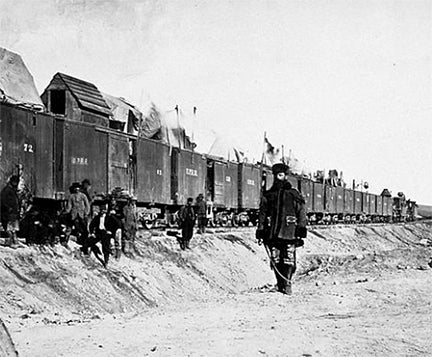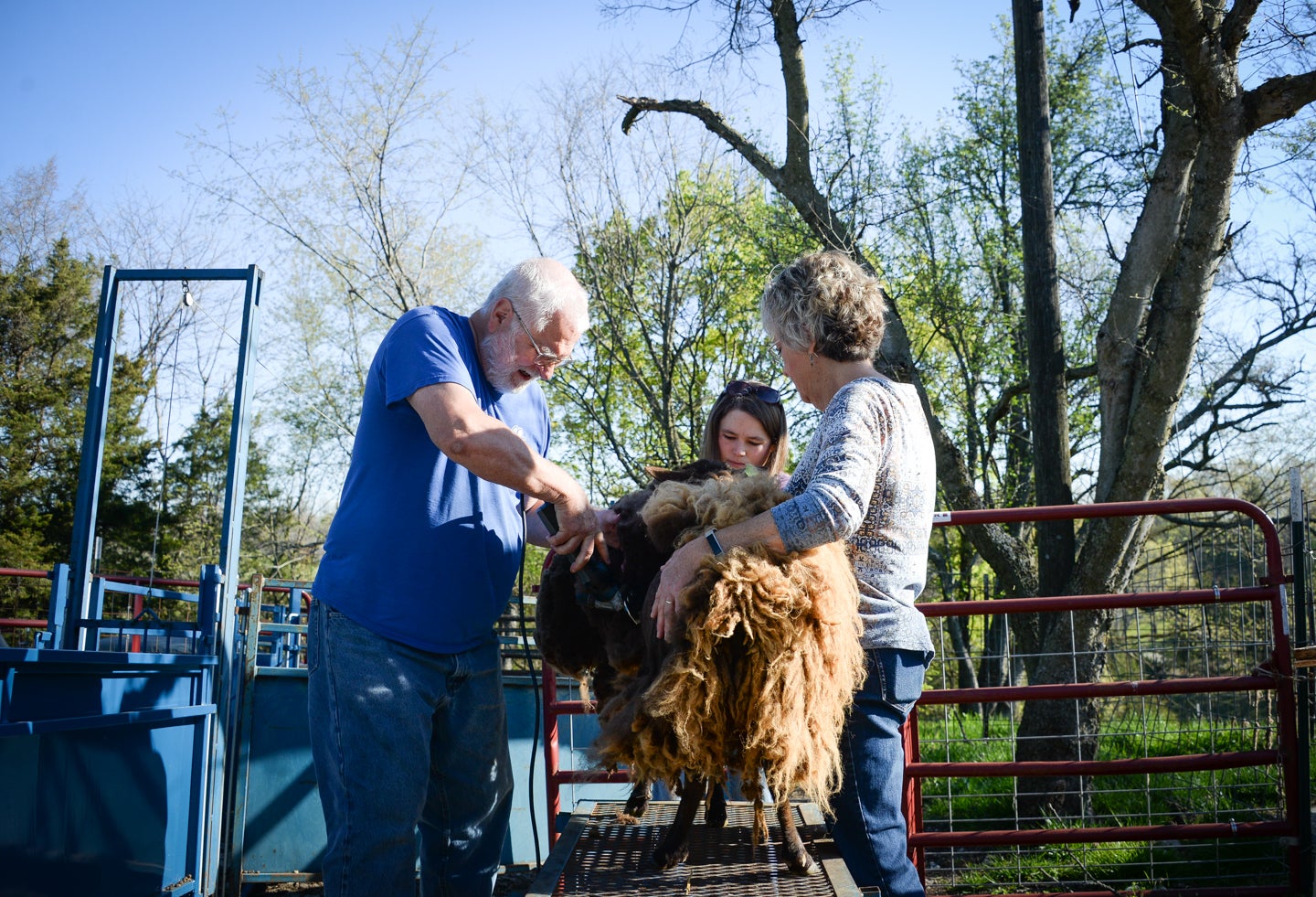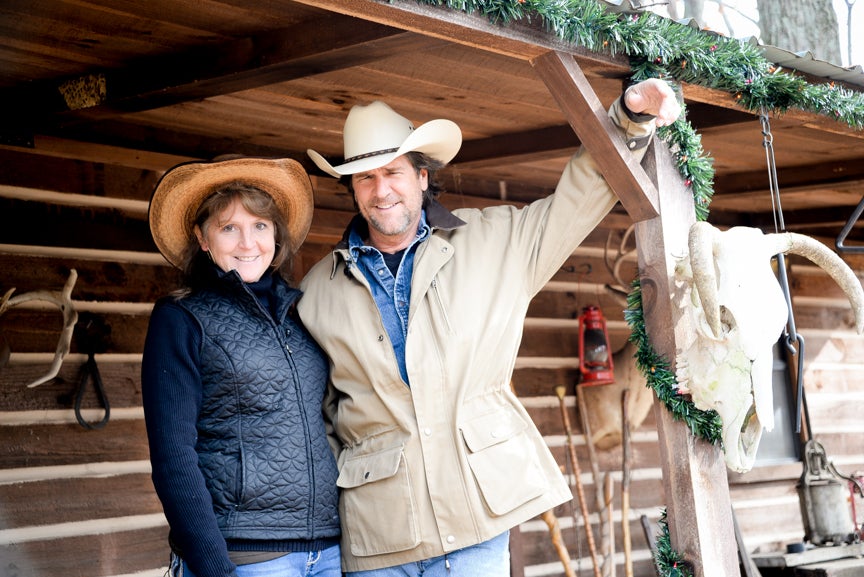By Charles H. Bogart
On May 10, 1869, there occurred one of those events that changes the course of American history. On that day in Promontory, Utah, a Golden Spike was driven into a tie that held a rail. This Golden Spike was the last of over a million iron spikes that had been driven to hold a network of rails in place, rails that stretched from the Atlantic Ocean to the Pacific Ocean.
It was now possible to travel by train from New York City to San Francisco, California. To preserve this moment in time, a photograph was taken of the local celebration that took place upon the completion of the transcontinental railroad. Today, nine out of every 10 Americans, upon seeing this photo, immediately recognize it as marking the completion of an epic feat of railroad engineering.
One of the men in this photo, John S. Casement, has a Frankfort connection. Casement’s stay in Frankfort was short but ensured that Frankfort remained the state capital of Kentucky.
John Casement was born in New York in 1829. In 1850, he relocated to the Cleveland, Ohio, area where he entered into building railroads as a contractor. In 1862, at the start of the Civil War, he raised the 103rd Ohio Volunteer Infantry Regiment and was appointed its colonel. In September 1862, in response to Confederate forces under Gen. Kirby Smith having entered Kentucky and capturing Frankfort, the 103rd Ohio moved south to Fort Mitchell, Kentucky, for the defense of Cincinnati.
Following the Battle of Perryville, the Confederates withdrew from Kentucky and Gov. James Fisher Robinson, with the other state officers, returned to Frankfort. Sent to Frankfort at this time to support Robinson was the 103rd Ohio. While in Frankfort to bolster the defense of the city, Casement designed and laid out an earthen fort on the hill above the old Capitol.
Built by the men of the 103rd, the earthwork was named Fort Boone, and the hill it stood upon became known locally as Fort Hill. In May 1863, the 103rd Ohio departed from Frankfort for active service with the Army of the Cumberland and mustered out of the Union Army in June 1865 without returning to Frankfort. Casement was not with the regiment when it mustered out, having been promoted to Brigadier General and given command of a brigade.
With the departure of the 103rd Ohio, defense of Frankfort fell upon Frankfort’s Home Guard, the 36th Enrolled Militia. On June 10 and 11, 1864, the citizens of Frankfort, to defend the city from part of Gen. John Hunt Morgan’s Confederate command, took up arms and manned the walls of Fort Boone. From behind its walls, the men of the 36th Enrolled Militia successfully defended Frankfort, thus preventing the Confederate raiders from looting and burning the town. This successful defense of Frankfort from behind the walls of Fort Boone ensured that Frankfort remained the state capital.
In 1863, on the national scene, Congress passed and President Abraham Lincoln signed into law legislature authorizing the building of the Transcontinental Railroad. The Union Pacific built westward from Omaha, Nebraska, and the Central Pacific eastward from Sacramento, California. Work on building the railroad westward from Omaha had been slow to start and, in 1865, daily progress in laying track was measured in feet not miles.
In 1866, the Union Pacific Railroad’s investors set out to restructure the company’s track laying process. They placed Gen. Granville Dodge in charge of overall railroad construction and Gen. Casement was put in command of day-to-day track construction. Casement’s first action was to restructure the building of the railroad from piecemeal work to assembly line work.
Each work gang performed but one job within the total construction process. The workers lived at the work site on trains equipped to house and feed the workers and move down the track as the end of the track moved west. These rail gang trains soon gained the nickname “Hell on Wheels.”
Under Casement’s oversight, daily track laying progressed from less than a mile a day to five to six miles a day. Thus the term “Railroading Through” was born as Casement let neither weather or terrain slow the laying of track.
On May 10, 1869, following the driving of the Golden Spike by various railroad officials, it was time for the Central Pacific and Union Pacific workers to celebrate. They each pulled one of their engines nose to nose and stood in jubilance as a photographer took a photo of the unofficial celebration of the finishing of the Transcontinental Railroad.
Clustered in with his workers is Casement. With the completion of the Transcontinental Railroad, Casement took on and successfully completed other railroad building projects. When he died in 1909, Casement was respected as one of the finest railroad contractors in North America.
At the beginning of the 21st century, Casement’s life entered into Frankfort homes by way of the TV series “Hell on Wheels” via the fictional character of Cullen Bohannon.











